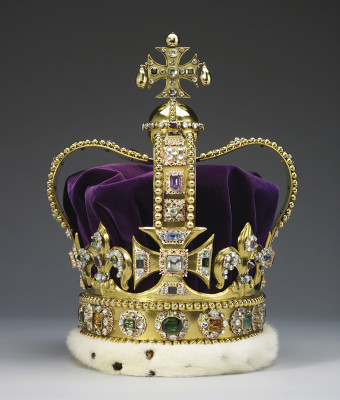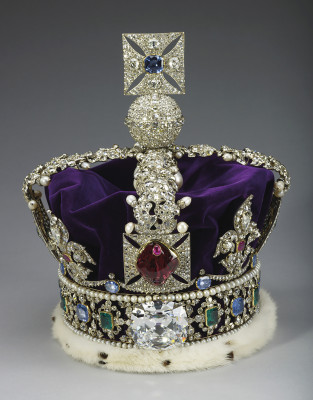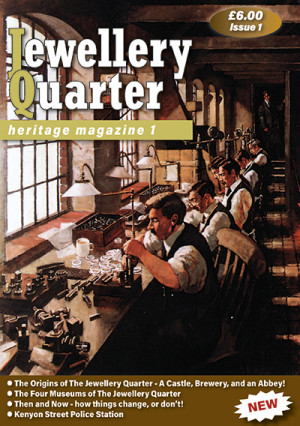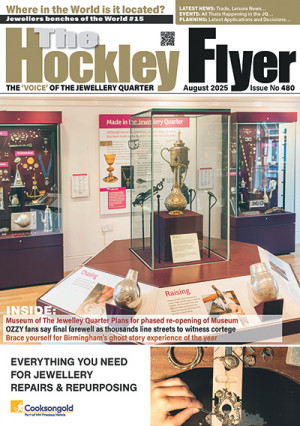An academic at Birmingham City University’s School of Jewellery, the largest of its type in Europe, has provided expert analysis of the jewellery and ornamentation expected to be on show for the coronation of King Charles III.
Miranda Wells, Associate Professor and Head of Gemmology, offers valuable context and insight into St Edward’s Crown, Queen Mary’s Crown, the Sovereign’s Ring, Queen Adelaide’s Ring, and the Sovereign’s Sceptre with Cross.
 St Edward’s Crown:
St Edward’s Crown:
Miranda Wells, Associate Professor and Head of Gemmology at the Birmingham City University School of Jewellery, said: “Throughout our history, a variety of different crowns have been used for our monarchs. King Charles III has chosen the most traditional of these for his coronation – the St Edward’s Crown.
“The original, named after St Edward the Confessor, was used in coronations from the 13th Century and was regarded as a holy relic. However, after the English Civil War it was melted down on Cromwell’s orders. When Charles II was crowned in 1661, the current St Edward’s Crown was made as a copy of the original.
“Since then, it has been used to crown six British monarchs: Charles II (1661), James II (1685), William III (1689), George V (1911), George VI (1937) and Elizabeth II (1953).
“Other monarchs chose to use lighter crowns such as the Imperial State Crown, as the St Edward’s Crown weighs a hefty 2.23kg. It is made of 22 carat gold and is decorated with a stunning 444 stones including aquamarines, topazes, tourmalines, rubies, amethysts, sapphires, garnets, and spinels.
“In a BBC documentary in 2018, Queen Elizabeth II was filmed with the crown for the first time since her own coronation 65 years before and commented on the weight of the crown and how ‘unwieldy’ it was to wear.”
 Queen Mary’s Crown:
Queen Mary’s Crown:
“Camilla will be crowned wearing the charming Queen Mary’s Crown, which was made in 1911 for George and Mary’s coronation. It is an elegant and lighter weight crown and was originally entirely set with diamonds in a delicate silver and gold frame.
“The original held three of the largest diamonds in the Crown Jewels: the contentious Koh I Noor (Mountain of Light), and two stones cut from the Cullinan diamond. This was the largest diamond ever discovered and was found near Pretoria in 1905, weighing an incredible 3,106 carats.
“The Cullinan diamond was gifted to Edward VII, and later cut into nine major stones which were incorporated into the Crown Jewels.
“After Queen Mary’s coronation, these three large diamonds were removed and set into other jewels and replaced with rock crystal replicas. The crown is very versatile, as the arches can be removed, and the lower part worn as a circlet.”
Sovereign’s Ring and Queen Adelaide’s Ring:
“Just as with weddings, there is a tradition of a ring being placed on the monarch’s hand during the coronation ceremony, just before the monarch is crowned. When the ‘Virgin Queen’ Elizabeth I was once asked why she had not married, she famously pointed to her coronation ring and said that she was wedded to England.
“The tradition for many centuries was that a new ring would be made for each monarch, which would pass into their personal possession. However, Queen Victoria bequeathed her own coronation ring and the rings she had inherited from William IV and Queen Adelaide to the Crown.
“Since then, King William’s ring has been used for all coronation ceremonies. It was originally made in 1831, and features a large oval sapphire overlaid with a ruby-set cross (representing the flag of St George) surrounded by diamonds.
Since the 13th century it has been traditional to include rubies in coronation rings, and the four that are in the Royal Collection all feature these beautiful stones.
“Similarly, Camilla will wear the coronation ring of Queen Adelaide. This is a stunning octagonal ruby set widthways across the finger and surrounded by fourteen diamonds. Unusually, the yellow gold band is also set with a further fourteen rubies stretching right around the finger.”
Sovereign’s Sceptre with Cross:
“Sceptres are used in coronation ceremonies to symbolise the monarch’s power as Head of State. They are derived from the staffs which monarchs have carried as a symbol of sovereign authority throughout history, they are thought to have originally been similar to shepherds’ crooks.
“The earliest royal sceptre was found in the tomb of an Egyptian Pharoah, and dates to around 2,600 BC. Charles will hold two symbolic sceptres during the ceremony, both were made after the Restoration for the coronation of Charles II in 1661.
“The Sovereign’s sceptre is three feet in length, weighs 1.17kg, and had to be made in three individual gold sections joined with enamelled collars. The sceptre is set with 333 diamonds and a further 60 assorted gemstones, including a large amethyst and a beautiful emerald set in the cross at the finial of the piece.
“However, without doubt the most stunning stone in the sceptre is Cullinan I, also known as the Great Star of Africa. This is the largest stone cut from the Cullinan diamond, and weighs an incredible 530.2 ct. When it was added to the sceptre in 1910, the frame had to be reinforced to safely hold the weight of such an enormous stone.”
More information:
🌐 https://www.bcu.ac.uk





